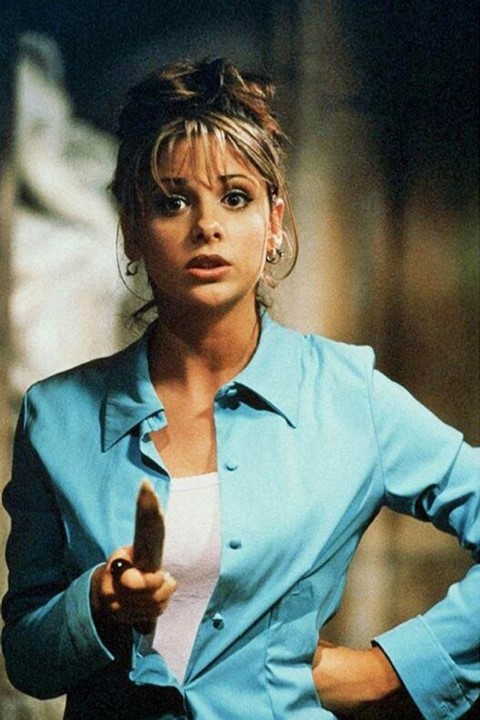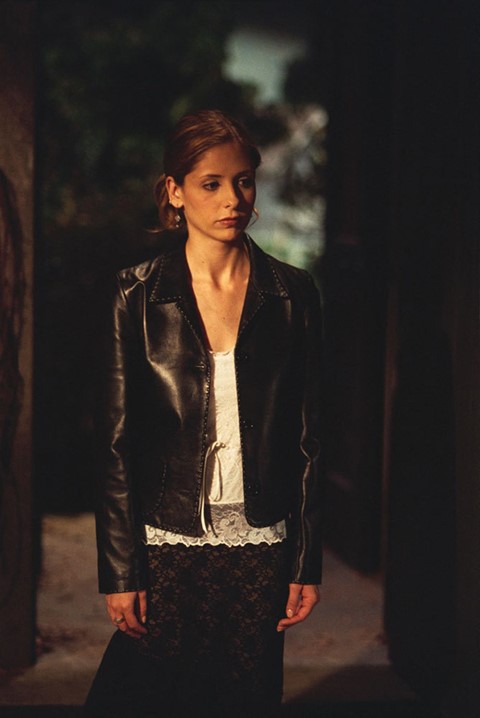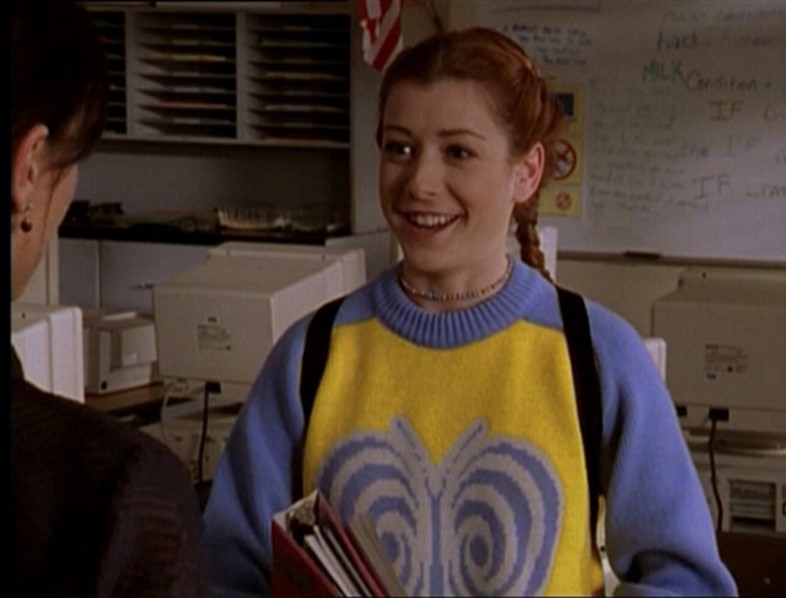20 years ago today, a certain stake-wielding, quip-spouting heroine landed on our TV screens and changed the way we approached vampiric fashion forever
Buffy the Vampire Slayer, Joss Whedon’s enduring series, portrayed adolescence as it is often felt by those experiencing it: pure hell. Leading the team capable of battling hell’s demons was a 16-year-old girl named Buffy Summers, who was for many of us, a formative feminist icon. Whilst heroines such as Lara Croft earned their power by adopting typically masculine gender markers, Buffy was different. The show delighted in its protagonist’s teen-girlness and displayed an inherent distrust of patriarchal power (looking at you, Mayor Wilkins). Here, we analyse the lessons to be learned from the Scoobie Gang’s sartorial choices.

1. Baby blue can be badass
Buffy never met an A-line mini skirt she didn’t like. Sure, it might seem terribly impractical to fight demons in tight pleather, but the slayer was unapologetic about her femininity and love of fashion. Her wardrobe was filled with pastel hues and girlish cuts, subverting typical horror movie tropes in which the girl dies first. Buffy taught us that strength comes in surprising packages, particularly favouring off-the-shoulder tops. The show’s costume designer, Cynthia Bergstrom, used US chains such as Macy’s to keep the characters’ style accessible. Girls watching in the 90s recognised elements of their own wardrobe in Buffy’s clothes, making them feel that they, too, had power. After all, one of the show’s key messages is that people should never be judged by their appearances…

2. ...Except when they can
In the earlier seasons in particular, fashion sense – or a lack of it – is a key way Buffy identifies vampires, whose ensembles often feel dated. In fact, in the first episode, Buffy points out a potential vamp to Giles, noting sagely that “only someone living underground for ten years would think that was still the look”. Whilst the rest of the characters’ taste in clothes evolves to reflect their maturity (think of Willow’s transition from bucket hats to a more assured way of dressing in the later seasons), the vampires are locked into a kind of uniform. Drucilla makes the most of this, flaunting her personal history with Georgian waistlines, prim Victorian collars and a gothic twist on the French manicure. Her striking outfits and firm sense of style arguably make her the show’s most enduring fashion icon.

3. Embrace your animal side
Whilst Buffy was no stranger to leopard print, Cordelia Chase was its true pioneer. A 1990s staple, this bold look paired well with Cordelia’s no-nonsense attitude; she was never one for pleasantries, always stuck to her guns and was fierce in the pursuit of her desires. Consider the way she bounces back after being rebuffed by a crush by spotting a new potential date in seconds: “Pick up the phone, call 911. That boy is gonna need some serious oxygen after I’m through with him.”

4. Re-consider Willow
Willow is typically thought of as having the worst fashion sense of the bunch, but she’s also the queen of comfort and something of a normcore luminary. In contrast to Buffy and Cordelia, she chooses practical dungarees and owns an impressive collection of sweaters. From a furry orange number, reminiscent of the first signs of mould on the skin of a peach, to a full-on Elmo look, Willow’s always snug – even in the face of evil. Her propensity for slouchy silhouettes makes us think she’d have been an early adapter to Eckhaus Latta and their homespun-style knits.

5. The most important thing to wear is attitude
Despite the notable outfits that Buffy gave us during its seven-season run, the true legacy of the show is not bound up in aesthetics (let’s face it, most of those demons looked like they stumbled out of your local costume shop). Buffy could kick ass in her pyjamas just as well as she could in knee-high boots, but no matter what she wore she always brought snappy comebacks with her to the fight, as well as her trusty sidekicks – the Scoobies. The TV show reimagined traditional family dynamics and put an emphasis on friendship, teamwork and resilience; valuable lessons to learn at any age.
